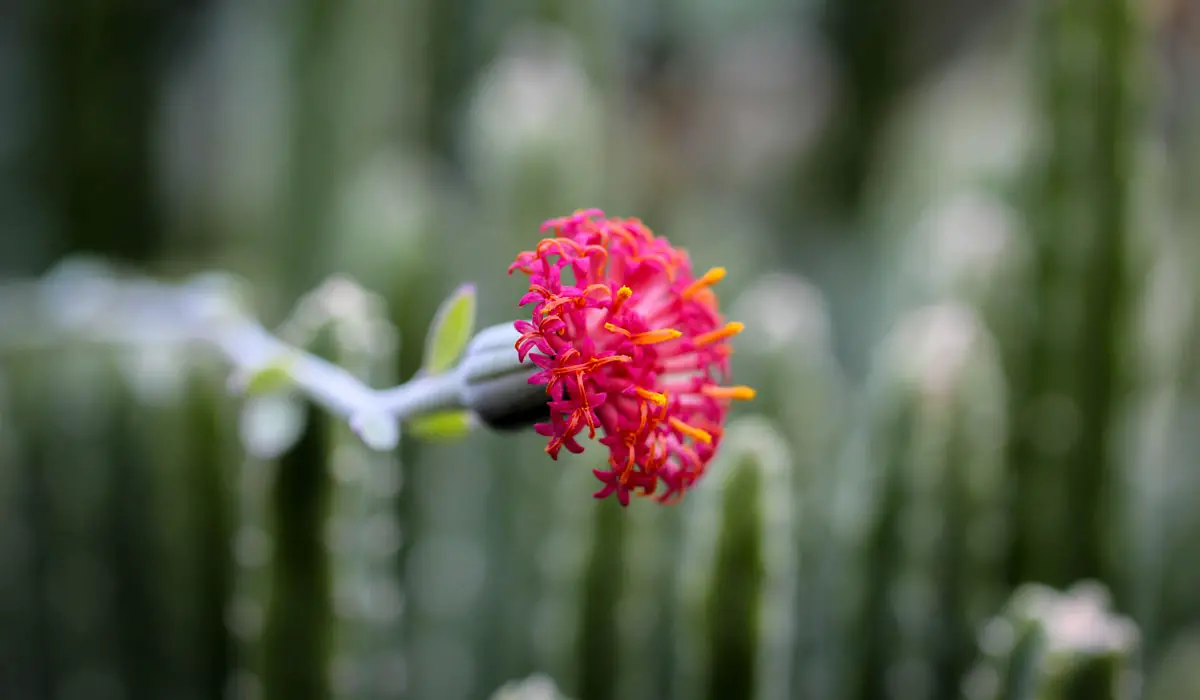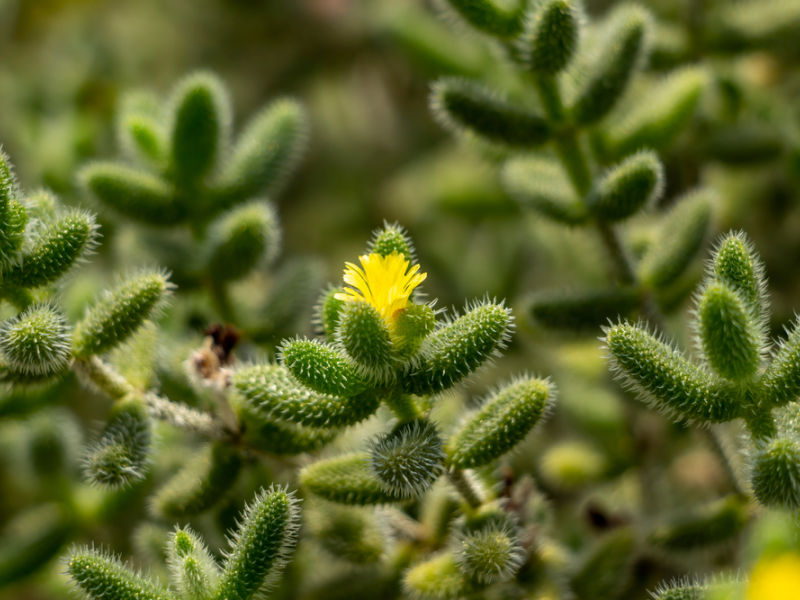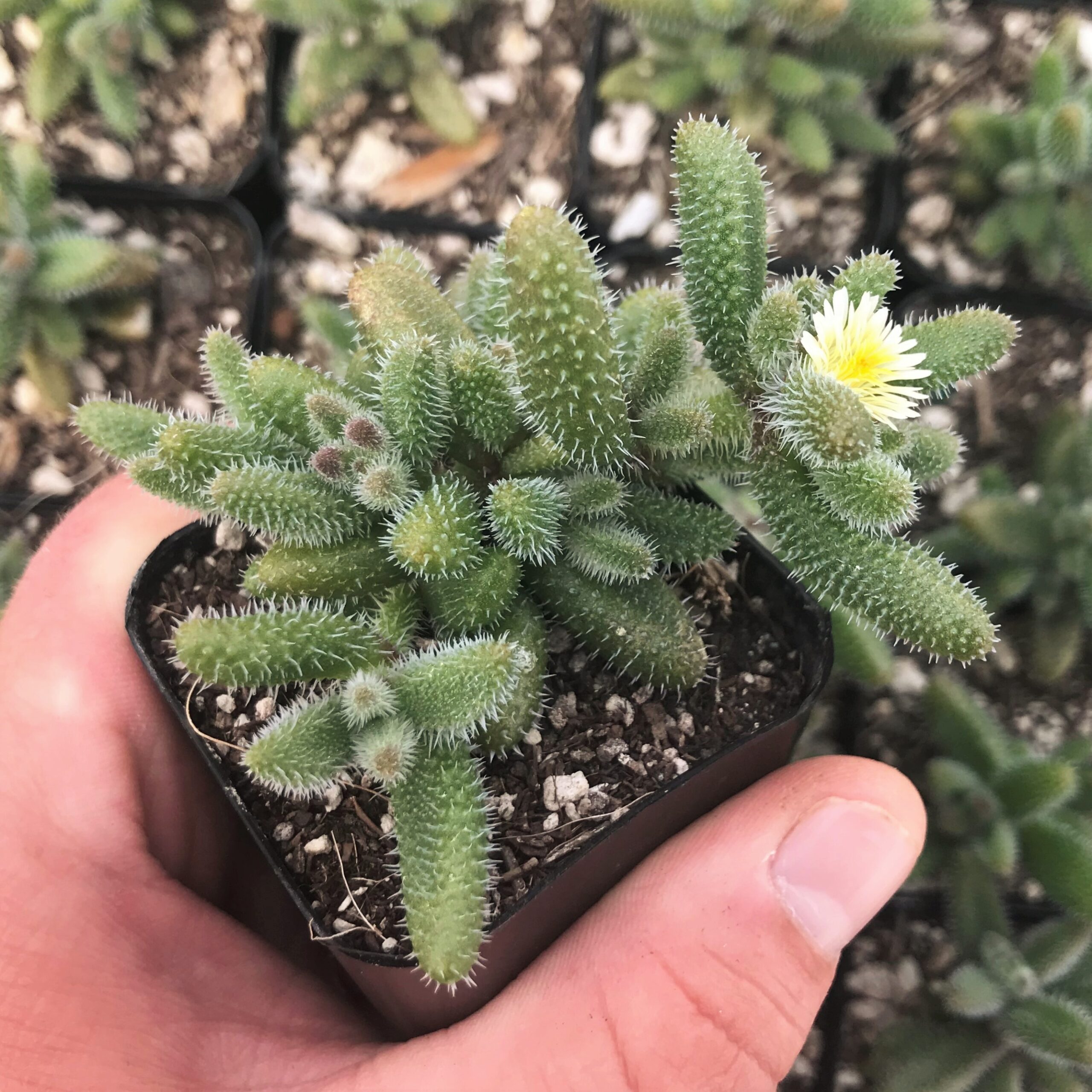Unlock the Power of Pickle Plant: Your Ultimate Guide to Growth & Care

If you’ve ever caught yourself staring at the pickle plant—Delosperma echinatum—wondering, “Why on earth is this adorable little gherkin having a meltdown?” you’re not alone. Years ago, I was certain I’d mastered succulent care, only to find my first pickle plant shriveling into oblivion within weeks, despite following every generic “let it dry out” guideline. It turns out this whimsical oddball isn’t just another succulent; it’s a drama queen in disguise—and an endlessly rewarding one if you crack its code.

This ultimate, hands-on troubleshooting guide is born from years of experimentation (and a few catastrophic mistakes). Here’s EVERYTHING you need to know to diagnose, rescue, and nurture your pickle plant through just about any scenario imaginable—no matter how bizarre or discouraging it seems.
1. Is That Really a Pickle Plant?
Before we leap into solutions, double-check what’s in your pot. I fell for the “pickle cactus” mislabeling once—it’s not the same! True Delosperma echinatum has:
- Finger-shaped leaves (2–4 cm) with soft, see-through bristles—never sharp.
- A trailing or sprawling habit (not upright like jade).
- Spring/summer yellow daisy-like flowers that appear almost overnight if conditions are perfect.
Snap a photo and compare with reputable sources like World of Succulents or Reddit’s r/succulents before proceeding. And if you’re curious about how to propagate pickle plants once you identify them, learn more about propagation techniques in our detailed guide on How to propagate pickle plants from cuttings.
2. Diagnosing the Top 12 Pickle Plant Problems
Time for relentless honesty: half your success lies in spotting problems early. Here are the most common issues—with precise symptoms and field-tested fixes:
1. Mushy or Blackened Leaves
What it feels like: Leaves that squish between your fingers instead of resisting pressure; black streaks near stems.
Culprit: Overwatering leading to root rot.
Immediate Fix:
- Unpot immediately—do NOT wait “to see if it recovers.”
- Snip off all black/mushy sections with sterile scissors (I use rubbing alcohol).
- Let healthy pieces air-dry overnight on paper towels.
- Repot in fresh dry succulent mix (add extra perlite).
- Resist watering for at least five days—yes, even if it looks sad!
Pro tip: If more than 60% is mushy, salvage viable stems as cuttings—you’ll regrow faster than waiting for roots to bounce back. For best results, check out our guide on Best soil mixes for healthy pickle plant growth to ensure your repotting medium supports quick recovery.
2. Wrinkled/Puckered 'Pickles'
Sensory clue: Leaves look like raisins and feel floppy.
Diagnosis: Underwatering OR roots lost function (usually after prior overwatering).
What works:
- Water deeply until water drains freely—but don’t repeat until soil is utterly dry again.
- If no rebound after two cycles, check roots for rot or desiccation.
Side note: I once left mine bone-dry on the sill during a two-week heatwave—the recovery took ONE month and three careful soakings! Be patient but vigilant. For optimizing your watering routine to avoid this, see our detailed guide on Optimizing watering schedules for pickle plants.
3. Sudden Leaf Drop
You walk in… half the leaves are scattered on the soil!
Likely cause: Temperature shock (drafts/cold windows), sudden move into strong sun, or root disturbance.
My fix:
- Move to stable environment (avoid direct AC/heater blasts).
- Wait two weeks before making more changes—plants need time to stabilize!
- Reduce watering slightly until new growth appears.
Surprising twist: My living room window draft turned thriving plants bald overnight one January—I now insulate sills with felt pads every winter.
4. Brown Tips/Leaf Burn
Visual cue: Brown crispy edges/tips; sometimes leaves get red splotches.
Root cause: Sunburn from hot glass exposure OR low humidity paired with too much direct sun.
How I solved it:
- Move plant back from window by 6–12 inches OR add sheer curtain during noon hours.
- Mist very lightly once a week if indoor humidity drops below 30% (use a cheap hygrometer!).
Counterintuitive tip: Some stress-red is normal and can make leaf color pop—in moderation! If you struggle with pruning to maximize plant vigor and reduce stress, we cover How to prune pickle plants for maximum yield extensively in our pruning guide.
5. Pale or Stretched Growth (“Etiolation”)
Stems grow long/thin, leaves spaced far apart; looks leggy and weak.
Diagnosis: Not enough light!
Solution:
- Relocate to brightest spot you have (east/west facing window best indoors).
- If sunlight isn’t possible? Invest $25–$40 in a full-spectrum LED grow light like Sansi or GE—set timer for 10 hours/day.
I run all my winter succulents under dual LEDs—it rescued every etiolated pot within six weeks. For a deep dive into lighting setups and indoor vs. outdoor cultivation, read our guide on Comparing indoor vs. outdoor pickle plant cultivation.
6. Fungal Spots or Grey Mold
Look for discolored patches on leaves/stems and sometimes fuzzy mold at soil line.
Triggers: Poor airflow + excess humidity + organic debris stuck between leaves
Definitive fix:
- Remove infected material immediately with tweezers/cotton swabs dipped in diluted hydrogen peroxide (3% solution works well).
- Improve airflow by running a desk fan nearby on low—not aimed directly at foliage!
- Stop overhead misting altogether.
Learned this lesson after a rainy week kept my greenhouse closed—the smell of dampness was unmistakable! If you need help with fungal issues specifically, see our Troubleshooting common pickle plant diseases and disorders tutorial for detailed care tips.

7. Sticky Residue / Tiny Bugs
If you notice sticky rings around pot rims/leaves…
Suspects: Aphids or mealybugs are partying unseen!
Battle plan:
- Isolate plant from others ASAP.
- Dab affected spots daily with cotton swabs soaked in diluted neem oil/alcohol mix (swab gently!).
- For mealybugs deep inside leaf joints—a blast of compressed air can dislodge them before treatment.
Case study: Kimberly’s aphid outbreak vanished within ten days using this exact method—no chemicals needed beyond neem oil ($8 bottle lasts years). For comprehensive pest control, see our guide on Preventing and treating common pickle plant pests.
8–12: The Less Obvious Challenges
- Rootbound Roots
Check annually; if roots coil tightly around pot base? Time to upsize by only one inch—not more—or risk root rot due to excess wetness post-repotting.
- Soil Compaction
If water pools atop soil without sinking in? Gently aerate top layer using chopsticks and repot next growing season; add extra pumice/perlite next time!
- Nutrient Deficiency
Unusually pale foliage may mean starved roots:
Fertilize monthly Mar–Sep using quarter-strength cactus fertilizer ((e.g., Schultz Cactus Plus)). Skip entirely October–February. For recognizing and fixing these deficiencies, see our detailed guide on Recognizing and fixing nutrient deficiencies in pickle plants.
- Offset Overcrowding
Crowds inhibit air flow; thin pups annually by snipping off extras at base—you’ll boost mother plant vigor AND score easy propagations! For step-by-step instructions on propagation, check out How to propagate pickle plants from cuttings.
- Pest Insurgency Redux
Spider mites leave webbing/fine speckles on leaves—wipe down weekly with soapy water during outbreaks while boosting local humidity temporarily with pebble trays near but not under pots.
3. Troubleshooting Table — At-a-glance Rescue Matrix
| SYMPTOM | CORE CAUSE(S) | MY GO-TO SOLUTION |
|---|---|---|
| Mushy/blackened pickles | Overwatering/root rot | Remove damaged bits; repot dry; skip watering >5 days |
| Wrinkled/shriveled leaves | Drought/lost roots | Deep soak; monitor rebound over weeks |
| Sudden mass leaf drop | Drafts/temp shock | Stabilize temps/light; pause interventions briefly |
| Pale/leggy growth | Low light | Move closer to sun/windowsill/grow lights |
| Fungus/grey mold | Humidity/bad airflow | Remove affected tissue/improve ventilation |
| Sticky residue/aphids | Pests | Neem oil swabs/compressed air/routine checks |
| Brown tips/leaf scorch | Sunburn/humidity | Filter midday sun/add slight humidity |
This table lives taped inside my greenhouse door—a ritual that’s saved dozens of plants since I started tracking solutions rather than relying on memory alone!
4. Propagation & Recovery Tactics After Disaster Strikes
If you need to salvage what’s left post-calamity:
Cutting Propagation Protocol
I’ve rooted hundreds of stems by:
- Selecting healthiest remaining stem(s) – minimum length = pinkie finger (~2+ inches)
- Letting cut ends callous at least overnight somewhere breezy
- Inserting into just-barely-moist cactus mix set under bright indirect light—not full hot sun yet!
First roots usually sprout within three weeks—watch for gentle tug-resistance before returning to regular watering schedule.
Bonus insight: Even single-leaf segments can regrow whole clusters when patience runs high—I once revived an entire collection from scraps after an autumn overwatering fiasco wiped out my main mother plant! For detailed guidance on propagation methods, see our full tutorial on How to propagate pickle plants from cuttings.
5. Special Scenarios — Unusual But Real
Get ready for those curveballs nobody warns you about…
Atypical Flowering? What It Means
Sometimes pickle plants bloom “off-season” indoors under LEDs or after drought stress breaks—a sign they’re happy… or trying desperately before declining! Document bloom dates & subsequent vigor—it reveals whether conditions suit true thriving vs survival mode.

Growth Stalls Despite Seemingly Perfect Care
Don’t panic if new growth pauses for months outside peak season—that’s dormancy kicking in! Resume patience & avoid tinkering excessively until spring arrives.
Vexing Unidentified Wilts
Occasionally plants collapse without clear signs—is soil infested with fungus gnats? Are roots girdled by mineral build-up? Flush mix thoroughly every few months using distilled water & consider swapping soil next spring as insurance against hidden pests/pathogens sneaking up year over year.
6. Essential Tools & Upgrades Worth Their Weight
Every enthusiast eventually finds their own toolkit sweet spot—but here are my non-negotiables:
- Moisture meter ($10): sanity check when unsure if deeper soil layers are drying out properly
- Terra cotta pots: irreplaceable insurance against deadly moisture build-up
- High-quality perlite/pumice (Espoma brand rocks): keeps your substrate fluffy season after season
- LED grow lights w/timers for sun-starved climates
- Fine-tipped tweezers/cotton swabs/neem oil arsenal—for catch-and-kill pest patrol
And yes—I keep backup bags of pre-mixed gritty blend so repotting emergencies don’t send me scrambling last minute. For a full list of must-have gear, check out our Best tools and equipment for pickle plant gardening guide.
7. Case Studies From Real Growers' Triumphs…and Calamities
Let’s bring these troubleshooting lessons alive:
Back when an August monsoon flooded my mini-greenhouse overnight, I lost four mature pickle plants but managed to save three baby offsets using nothing but quick unpotting and five days’ total neglect while they calloused bone-dry on cardboard trays.
In another unforgettable experiment during lockdown winter ‘20, my east-facing apartment yielded three times as many blooms simply by shifting pots two feet nearer the coldest window and upgrading lighting timers—a difference of just those extra morning rays!
And then there was Jess from our local gardening club who rescued her limp specimen after her cat knocked it behind a radiator all weekend—the secret turned out to be letting surviving pieces rest untouched for ten full days before rehydrating gently!
8. Building Resilience — Turning Setbacks Into Success Stories
Every setback is data! I keep digital photos each month to track subtle shifts nobody notices day-to-day—it paid off last year when gradual color loss flagged nutrient deficiency long before symptoms got severe enough for irreversible decline.
ACTION PLAN — Your Personalized Pickle Plant Health Regimen:
- Audit light levels using phone apps like Lux Light Meter;
- Test soil dryness weekly below surface—not just top inch;
- Schedule quarterly soil flushes & semiannual repots;
- Try propagation drills BEFORE disaster strikes;
- Photograph progress monthly—it sharpens troubleshooting instincts fast;
- Tap communities like r/succulents whenever doubts arise—you’ll find someone else survived exactly what you’re tackling now!
Final Takeaways — Join the Pickle Plant Enthusiast League
The pickle plant rewards close observation as much as textbook guidelines—the real magic is responding quickly and confidently when things go sideways! Don’t fear failure; each mishap teaches something irreplaceable about YOUR unique home climate, habits, and caregiving quirks that no algorithm could predict ahead of time.
Celebrate each stubborn new shoot as proof that resilience starts small—and soon enough people will ask how your gherkin garden stays so lush year-round while theirs falters mysteriously (“what ARE your secrets?”). Share freely—the world needs more joyful pickle planters turning breakdowns into brilliant breakthroughs!
Let’s fill every windowsill—from icy Toronto condos to steamy Miami flats—with thriving bristly clusters…and prove once and for all that even the quirkiest succulents can become indestructible legends with enough enthusiasm—and just the right dash of troubleshooting know-how!
Enhanced with practical cross-references to our supporting guides to deepen your pickle plant mastery.



